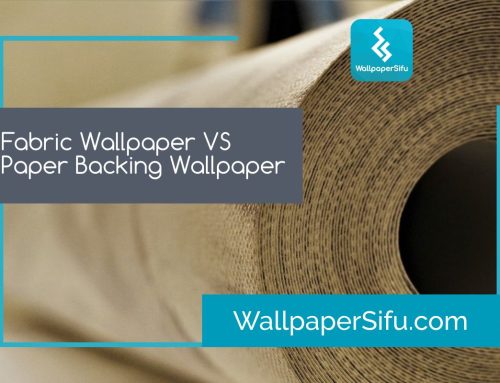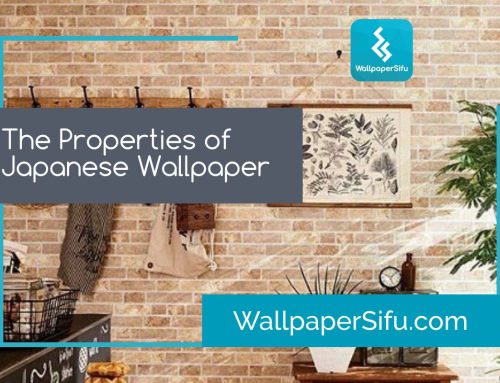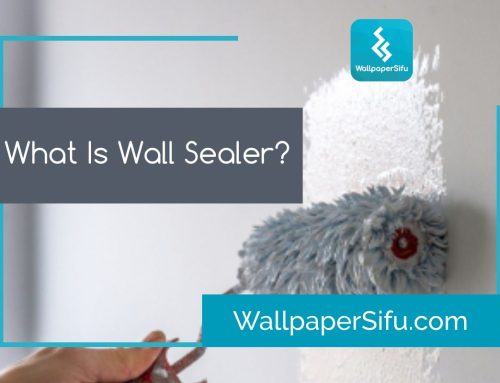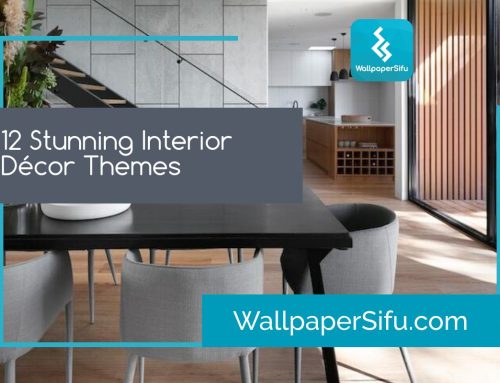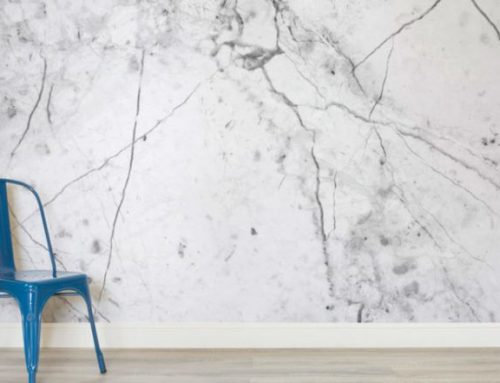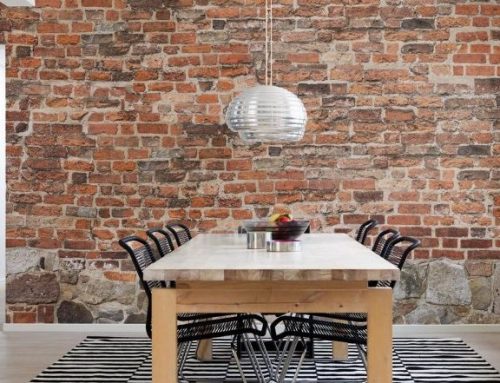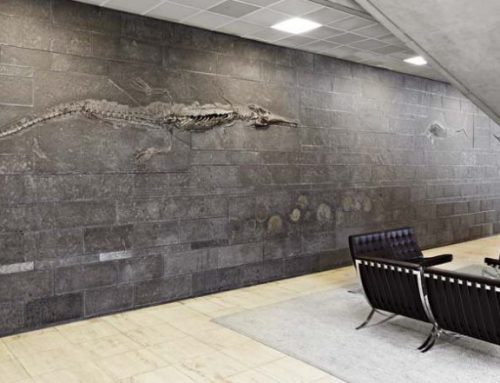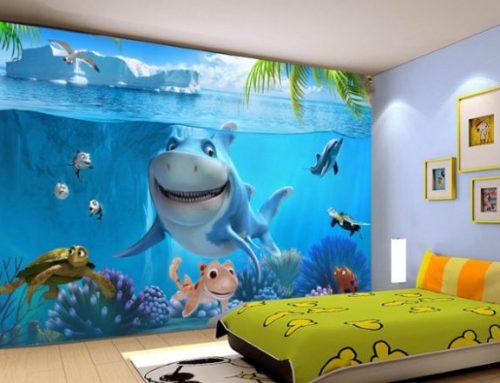Are you fond of interior wall decoration? Attractive wallpaper can be a perfect choice for you.
In addition to making walls look elegant, wallpaper also creates a great mood for your room.
Consider your home’s walls as a canvas and each wall a blank slate. You can quickly give it an amazing appearance with the help of wallpapers.
There are many benefits of using wallpapers, including beautiful transformation, adding depth to the room, enhanced durability, low maintenance and getting rid of imperfections, etc.
However, there are also some common defects associated with them. Yes, here we are talking about defects in wallpapers and its causes and solutions.
Table of Contents:
10 Common Wallpaper Defects
Below Are the 10 Common Wallpaper Defects and Its Solution
1) Peel Off
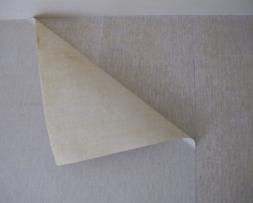
Sometimes, a side of the wallpaper starts to peel off. It may affect the already stuck part as well.
Do not worry if you are getting the peel-off wallpaper issue. Immediately get it fixed until this issue gets worse, you can apply adhesive on the wallpaper and re-attach them back to the wall.
Possible Causes:
1. Moisture Issue. A humid room contains moisture in the air, the moisture may re-wetting the dried adhesive, causing the adhesive to be diluted. This will weaken the adhesive strength, and cause the wallpaper peel off.
2. Detachment of Paint. Sometimes, wallpaper detachment may not due to the wallpaper issue, this may caused by the paint. If the paint quality is not good, the paint which you have attached the wallpaper detaches from the wall and causing the wallpaper peel off together with the paint.
3. Adhesive issue. The adhesive you have used might not be strong enough to hold it. Maybe you add too much water to the paste, this will weaken the adhesive bonding strength, causing the wallpaper to drop earlier.
4. Caused by kids or pet. If you have pet or young children in your house, they like to scrape the edge of the wallpaper, they may also cause the wallpaper to peel off.
5. Installation issue. Installers did not apply the adhesive evenly on the edge, those area without adhesive may detach from the wall.
Solution:
2) Open Seams
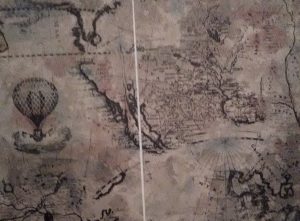
There is nothing more annoying than after finishing the wallpaper installation, everything looks perfect at that time, but when coming back on the next day, you notice a tiny gap between the wallpaper joins. It destroys the overall appearance of the wallpaper.
This issue normally happen when the adhesive is drying, the edges of the wallpaper tend to curl, shrink, and pull. The dry tension causes the wallpaper to stretch and make the joining open.
Possible Causes:
1. Fluctuation of room temperature. Before the adhesive is fully dried, turning on and off of the aircon can cause a drastic temperature change in the room. The interchange of warm and cool air may induce pushing and pulling forces on the wallpaper, this may cause the gap open.
2. Not applying sealer on the wall. The absorbent of the porous wall creates tension to the wallpaper, making them shift in position.
3. Not applying enough adhesive on the edge. The lack of adhesive at the edges can make the joining open up.
Solution:
3) Pattern Misaligned
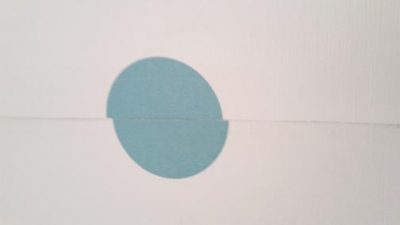
Sometimes, the alignment of the pattern is lost. It makes the wallpaper lose its magnificence. You may have noticed that the pattern is misaligned after you finished attaching the wallpaper.
Sticking the wallpaper requires time, skill, and patience for correct pattern alignment. This challenge is annoying.
Possible Causes:
1. Inaccurate Installation. It leads to mismatched patterns on the wall. You should keep checking the pattern alignment of the paper while installing and pasting. It needs precision and experience.
2. Printing issue. Even if you have installed the wallpaper precisely, you may still notice the variation in the pattern. Normally you may notice the upper part patterns can be aligned, but the bottom part patterns cannot be aligned, no matter how you adjust the alignment, there will be one part that cannot be matched. If this is the case, this may due to the wallpaper printing issue.
3. Uneven or bumpy wall. If the wall surface is not even, it will have few millimeter height different in between. This makes you hard to get the patterns aligned perfectly.
Solution:
4) Wrinkle
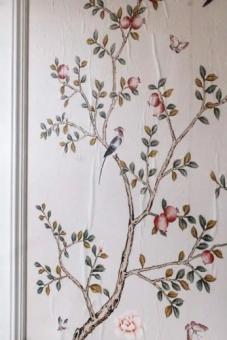
After installing the wallpaper, you notice wrinkles in the wallpaper. All the elegance seems lost when you see any kind of disorder in the texture. To avoid these conditions, you should consider the proper technique.
Possible Causes:
1. Install wallpaper upon an already papered wall. This will cause the wallpaper to not attach firmly to the wall.
2. The wall is not smooth, dry, damage-free, and clean. Tt causes trouble while sticking and sweeping.
3. Not enough booking time. An insufficient amount of booking time may bring more wrinkles.
4. You did not install the wallpaper appropriately. There may be issues in applying adhesive as well.
5. Paint detachment.The wall paint detached from the wall can cause wrinkles on the surface.
Solution:
5) Discolour
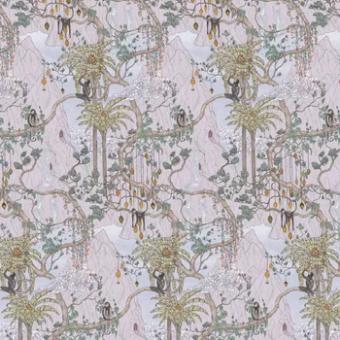
There can be environmental reasons behind the discoloring of wallpaper. With time, the wallpaper may look inelegant if the colour tone changes or it becomes faded.
Possible Causes:
1. Wallpaper quality issue. The ink used in the wallpaper is not efficient enough to last longer, the light fastness is weak. With time, or when exposed to sunlight or dust particles, it loses its colour.
2. Probably you rub or clean your wallpaper often. With this, the ink may lose its elegance.
3. Do you use detergent to remove the dirt and stains? The chemicals in the detergent may cause permanent discoloration.
Solution:
6) Stain
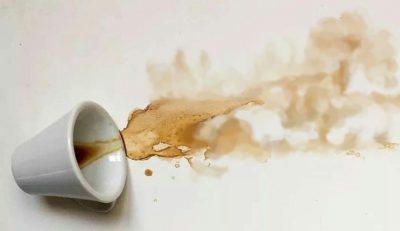
We use wallpaper to beautify the room. What if it has stains? All your efforts will be wasted. If you have wallpaper in the kitchen, there can be many specks of dust, oil, and smoke particles. They can stick to the paper. This makes the wallpaper lose its magnificence.
Possible Cause:
1. Use low quality wallpapers that without vinyl coating. Many of the low-price wallpapers are just a piece of printed paper, it is like a wrapping paper. It does not have a layer of vinyl coating on the surface to protect it. This type of wallpaper is not washable and it can easily get stain on it.
2. Manufacturing defect. The stains may be there before the installation. Overlooked the stain upfront will end up having it installed on your wall.
3. Some food particles may have spilled. This caused stains over the wallpaper.
4. Dirt, Dust and Smoke. Exposure of the walls to excess dirt, dust or smoke can develop stains.
5. Pipe leaking. Leaking of water pipe inside the wall can cause a yellowish water stain on the wallpaper.
Solution:
7) Torn
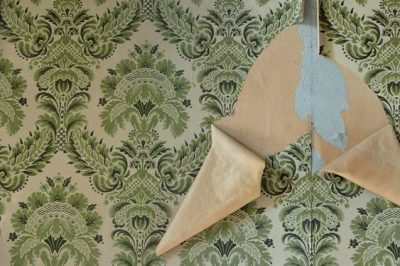
Torn wallpaper makes all your efforts fail. The wallpaper adds glamour to your personal space when you install it. But as time passes, the wallpaper gets older. It can be damaged at any time. Sometimes, lack of maintenance causes the paper to be pulled out and ultimately torn.
Possible Causes:
1. The quality of wallpaper is very much depends on its backing material. There are few types of backing, which are paper, non-woven and fabric backed wallpaper. If the backing material is weak, it will be easier to get torn.
2. For cleaning, you often rub or brush the wallpapers. This may cause scratches leading to tearing.
3. Contact with environmental conditions like moisture and sunlight may also be responsible. Wallpaper tends to peel off when moisture is trapped in it. Peeling off leads to tearing.
4. Even a tiny cut or scratch can be damaging to your wallpaper. Sometimes, children or pets can tear up the paper as they may enjoy doing that.
Solution:
8) Mold
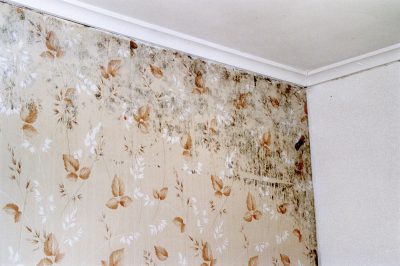
Over the period, mold and mildew may start forming over the wallpaper. It may not be noticeable at first sight. However, it grows from the corners and edges. When there is a lack of proper airing or ventilation, it creates favorable conditions for the growth of molds. It is most common in the bathroom or kitchen.
Possible Causes
1. Install wallpaper at high humid area. Area like bathroom and toilet are not a good place to install wallpaper, due to its high moisture in the air, moisture in contact with wallpaper can grow mold.
2. Faulty pipes or leaky roofs can cause mold growth. Improper drainage of water is terrible for walls.
3. Poor wallpaper quality. Some cheap quality wallpapers lack those important details that help prevent mold growth. Without mold prevention additive, mold can grow on the wallpaper.
4. Not applying wall sealer. Porous concrete contains moisture in it, it can easily absorb moisture and provides a fertile space for mold to grow on it.
Solution:
9) Bubbles

It is normal to observe small bubbles on the appearance within the first few days of the installation. This is due to the the adhesive paste are yet to dry.
Pressing and smoothing would not help on releasing the air bubbles, you can feel the adhesive paste on the wall. If this is the case, you no need to worry.
It takes about 5 days for the wallpaper adhesive to be fully dried. The small bubbles should disappear as the wallpaper adhesive dries, you will have a smooth and beautiful wall after 5 days.
If you still observe small bubbles after one week of the installation, it is no longer the adhesive paste, it is void under the wallpaper, you should contact your installer to come back for touch up.
Possible Causes of the Voids:
1. Adding too much water to the paste. The diluted paste will evaporate or absorbed by the porous cement, causing voids between the wallpaper and the wall.
2. Not applying sealer on the wall. An unsealed porous cement wall tends to soak up the adhesive paste. This creates space between the wallpaper and leads to voids formation.
3. The substrate is not well prepared. Direct wallpapering the wall without sanding it or removing the weak paint can cause a huge issue later. The weak paint may peel beneath the wallpaper, creating small voids between the wallpaper and the wall. The flaking paints adhere on the back of the wallpaper, this makes you hard to re-attach the wallpaper back to the wall again. You may need to replace the whole wallpaper.
Solution:
10) Colour Tones Different
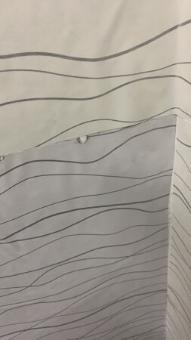
Nowadays, wallpapers are printed using digital printing machines. They are produced by batches and cut into many small rolls. The most common type of wallpaper printers are latex printer and UV printer.
To control the wallpaper quality and for easy tracing purpose, manufacturers will label every batch of the wallpaper with a series number, we call it a lot number.
From the lot number, we can easily discern, are the wallpaper rolls printed in the same batch using the same printer.
Even using a same printer, different printing batch wallpapers colour tone can be very different. It is hard to get back the 100% same colour tone as there are many factors affecting the printing outcome, for example, machine temperature, ambience temperature, machine calibration, level of ink, change of a new cartridge etc.
Thus it is important to purchase the wallpaper with the same lot number, this is to ensure a consistent wallpaper colour tone for your room.
Possible Causes:
1. Use different batch of wallpaper for installation.
2. Using different lot number of wallpaper for touch up, repair or replacement.
Solution:
The Bottom Line
Wallpapers can make your living space appear stylish. There is a great variety of colors, styles, textures, themes and patterns available to match your taste. It can boost the appearance of your wall to many folds.
By knowing all the possible wallpapers defects, you can prevent them from happening. As long as you do it right in the first place, like choosing quality wallpaper, do proper wall treatment. Wallpaper can last for many years.
Properly installed wallpaper adds unbeatable beauty and glare to the empty-faced walls. Whatever be your personality and how much space you have, you can always have perfect wallpaper for your home.

